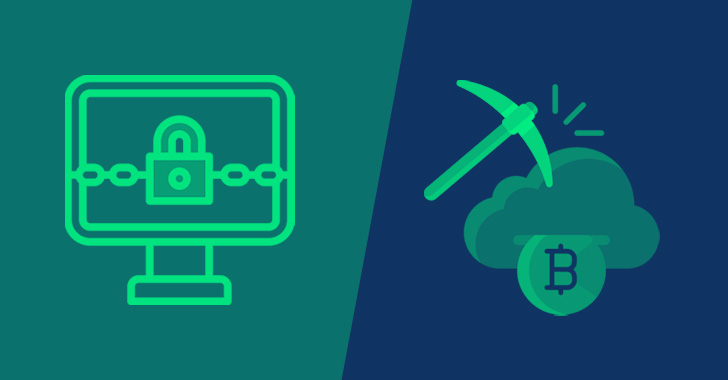
Atlassian Confluence Flaw Being Used to Deploy Ransomware and Crypto Miners
9.8 High
CVSS3
Attack Vector
NETWORK
Attack Complexity
LOW
Privileges Required
NONE
User Interaction
NONE
Scope
UNCHANGED
Confidentiality Impact
HIGH
Integrity Impact
HIGH
Availability Impact
HIGH
CVSS:3.1/AV:N/AC:L/PR:N/UI:N/S:U/C:H/I:H/A:H
7.5 High
CVSS2
Access Vector
NETWORK
Access Complexity
LOW
Authentication
NONE
Confidentiality Impact
PARTIAL
Integrity Impact
PARTIAL
Availability Impact
PARTIAL
AV:N/AC:L/Au:N/C:P/I:P/A:P
A recently patched critical security flaw in Atlassian Confluence Server and Data Center products is being actively weaponized in real-world attacks to drop cryptocurrency miners and ransomware payloads.
In at least two of the Windows-related incidents observed by cybersecurity vendor Sophos, adversaries exploited the vulnerability to deliver Cerber ransomware and a crypto miner called z0miner on victim networks.
The bug (CVE-2022-26134, CVSS score: 9.8), which was patched by Atlassian on June 3, 2022, enables an unauthenticated actor to inject malicious code that paves the way of remote code execution (RCE) on affected installations of the collaboration suite. All supported versions of Confluence Server and Data Center are affected.
Other notable malware pushed as part of disparate instances of attack activity include Mirai and Kinsing bot variants, a rogue package called pwnkit, and Cobalt Strike by way of a web shell deployed after gaining an initial foothold into the compromised system.
“The vulnerability, CVE-2022-26134, allows an attacker to spawn a remotely-accessible shell, in-memory, without writing anything to the server’s local storage,” Andrew Brandt, principal security researcher at Sophos, said.
The disclosure overlaps with similar warnings from Microsoft, which revealed last week that “multiple adversaries and nation-state actors, including DEV-0401 and DEV-0234, are taking advantage of the Atlassian Confluence RCE vulnerability CVE-2022-26134.”
DEV-0401, described by Microsoft as a “China-based lone wolf turned LockBit 2.0 affiliate,” has also been previously linked to ransomware deployments targeting internet-facing systems running VMWare Horizon (Log4Shell), Confluence (CVE-2021-26084), and on-premises Exchange servers (ProxyShell).
The development is emblematic of an ongoing trend where threat actors are increasingly capitalizing on newly disclosed critical vulnerabilities rather than exploiting publicly known, dated software flaws across a broad spectrum of targets.
Found this article interesting? Follow THN on Facebook, Twitter and LinkedIn to read more exclusive content we post.
9.8 High
CVSS3
Attack Vector
NETWORK
Attack Complexity
LOW
Privileges Required
NONE
User Interaction
NONE
Scope
UNCHANGED
Confidentiality Impact
HIGH
Integrity Impact
HIGH
Availability Impact
HIGH
CVSS:3.1/AV:N/AC:L/PR:N/UI:N/S:U/C:H/I:H/A:H
7.5 High
CVSS2
Access Vector
NETWORK
Access Complexity
LOW
Authentication
NONE
Confidentiality Impact
PARTIAL
Integrity Impact
PARTIAL
Availability Impact
PARTIAL
AV:N/AC:L/Au:N/C:P/I:P/A:P

